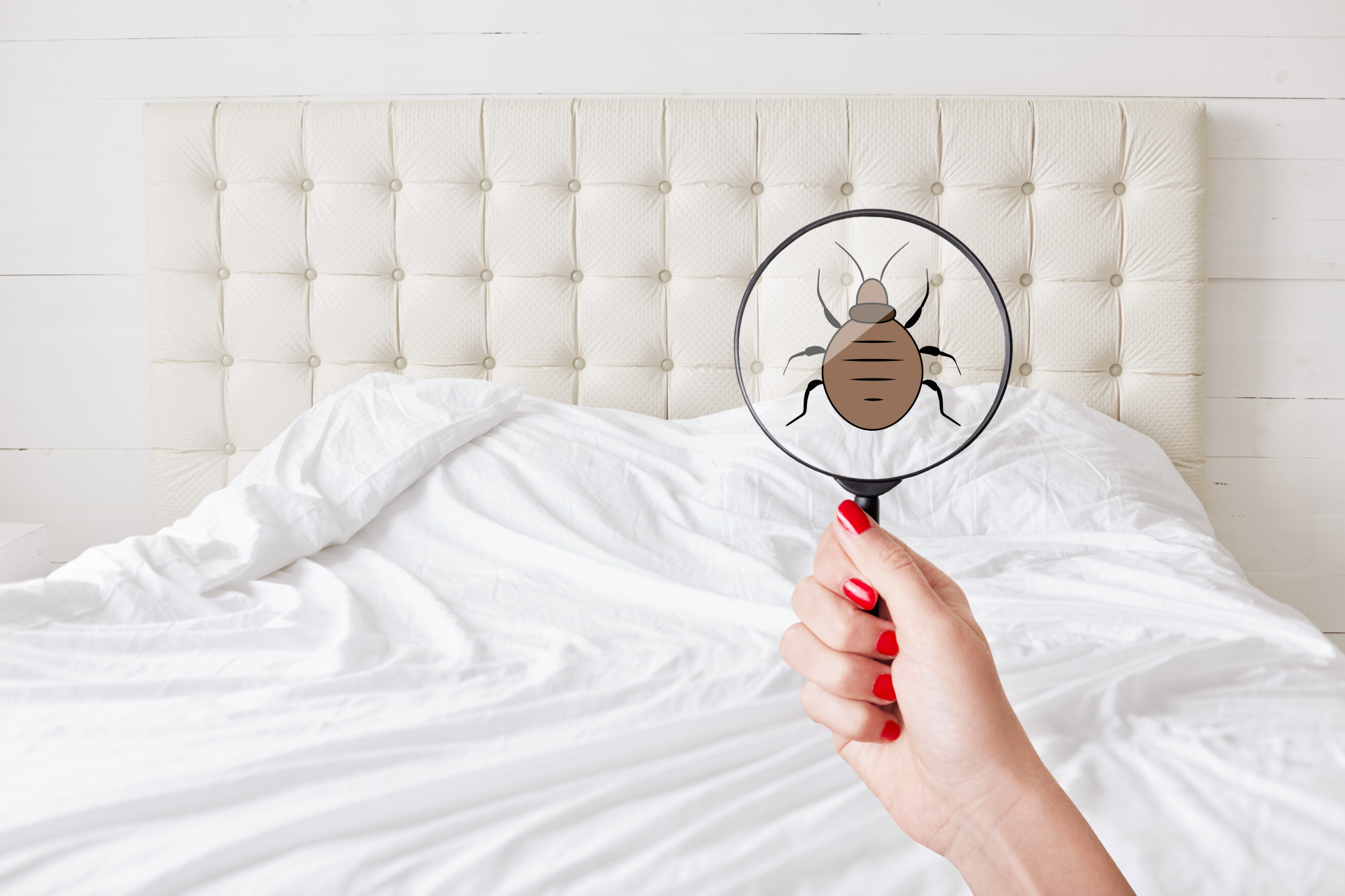Did you know there is more than one type of bed bug? In fact, there are almost 90 species of bloodsucking insects from the Cimicidae family.
Here’s a shocking thought: your home could even be infested with more than one species at a time. And a single female bed bug can lay five eggs every day, up to 500 eggs in her lifetime.
Are you concerned that you may have a bed bug infestation? Want to learn more about the particular species hiding under your sheets?
Keep reading to learn all about the most common types of bed bugs and how to get rid of bed bugs in your home.
Common Types of Bed Bugs in Houses
There is limited research available about all the various species of bed bugs, as most of them don’t present a problem to humans. However, there are at least eight species that could potentially infest your home, bite your family, and spread disease.
Common Bed Bug: Cimex lecturalis
Cimex lecturalis is the most common bed bug species. When most people picture an infestation, they imagine the common bed bug.
Cimex lecturalis thrive almost anywhere in the world, making them extremely easy to pick up while traveling. As international travel has become more popular and affordable, this species has rapidly spread to new homes. These bugs usually hitchhike from a hotel on luggage or clothing and quickly multiply once they reach their new home.
Tropical Bed Bug: Cimex hemipterus
Tropical bed bugs, or Cimex hemipterus, are very similar to common bed bugs. The main distinction is that they originate from and prefer to remain in warm, humid climates.
Tropical bed bugs are also slightly smaller than common bed bugs. This could mean that you pick them up more easily without noticing them in your luggage.
Eastern Bat Bug: Cimex adjunctus
Bat bugs and bed bugs perform many of the same behaviors, but they look distinctly different. Bat bugs have small hairs all over their bodies, while common bed bugs only have short hairs on their legs and lower thorax.
Eastern bat bugs live all across the United States but are most common near the East Coast. Bat bugs typically attach themselves to the wings of brown bats to feed while the bats sleep. Bat bugs feeding off of humans is rare, and generally only happens if there is also a bat infestation in the home.
Western Bat Bug: Cimex pilasellus
The Western bat bug is very similar to the Eastern bat bug, except that the Western bat bug is comfortable living across the nation. Eastern and Western bat bugs are even commonly found together and feed on many of the same bat species.
Like Eastern bat bugs, Western bat bugs aren’t likely to infest human homes, but it is possible. If bats are not available, bat bugs may nest in secluded, hidden areas of your home, like a mattress, where they have a reliable food source: you.
Colorado Bed Bug: Hesperocimex Coloradensis
The Colorado bed bug is its own unique species, but there hasn’t been much research on this bed bug type. Colorado bed bugs rarely infest human homes, and mostly prefer to feed off nested birds. If a bird happens to nest in the attic or window, it’s possible that these bed bugs could infiltrate your home.
Chimney Bug: Cimexopsis Nyctalis
Chimney bugs live in the same places and have the same appearance as common bugs. However, this species is easy to distinguish because they are diurnal, meaning they are most active during the day.
Unlike common bed bugs, it’s easy to spot chimney bugs crawling around during the day, especially during the summer months. As their name suggests, this species is more likely to live in empty walls and chimneys than it is to reside in your bed. However, they will still feed off human blood and need to be eradicated if found.
Swallow Bed Bug: Oeciacus vicarius
Swallows are small birds that live throughout the Americas. Like bats, they are frequently the victims of their own special parasites: swallow bugs.
Swallow bugs prefer to occupy swallow nests and feed on the birds while they guard their eggs in spring. They are a significant threat to swallows, posing a number of deadly diseases. Swallow bugs can even survive up to three years without feeding, and will patiently wait for the swallows (or you) to return to their nest.
Chicken Bug: Haematosiphon indora
The chicken bug, also sometimes called a poultry bug or Mexican chicken bug, is another bed bug species that mostly feeds off birds. Chicken bugs prefer to reside in secluded shelters, like chicken coops and barns. Large birds, like raptor species, turkeys, and chickens are the most common targets for chicken bugs.
Although humans like to raise poultry like chickens and ducks, these bugs don’t often seek out human blood. A bite from this species is technically possible, but they prefer to remain out of sight and seem to exclusively feed on birds.
Signs of Bed Bugs
Every species will have some unique features and behaviors. Most people will discover that they have a bed bug infestation when they experience these common signs:
- Red, itchy bites, especially in rows
- Poor sleep and discomfort in bed
- Bites in exposed areas like the arms, legs, and torso
- A strong, musty odor in the room
- Small, bloody spots on the bed
- Brown exoskeleton shells in the bed
- Clusters of bugs on the mattress
How to Get Rid of Bed Bugs
The best way to solve a bed bug problem is to avoid one. When you stay in a hotel or bed and breakfast room, always inspect the bed and box spring. Bed bugs tend to hide in the corners and seams of the mattress.
As soon as you return home from a trip, wash your clothing and closely examine your luggage. Avoid setting unwashed items on your bed or other furniture.
Removing bed bugs once they’ve started to settle and multiply can be much more difficult. Some home remedies may reduce the number of bed bugs, but professional extermination is the most effective solution to prevent re-infestation.
Don’t Let the Bed Bugs Bite
Many types of bed bugs could be residing in your home, but you don’t have to live in fear. Thermal Clean LLC is available for emergency consultations! We’re dedicated to keeping you and your family safe from tiny invaders.
FAQs About the Types of Bed Bugs Found in Houses
Can more than one type of bed bug infest a house at the same time?
Yes, it is possible for multiple species—such as common bed bugs and bat bugs—to exist in the same home. This typically occurs when birds or bats are also present around the property.
Are bat bugs and bed bugs treated the same way?
Yes, bat bugs require the same extermination methods as bed bugs, including heat treatments and thorough inspections. However, eliminating the bats or their nesting areas is also necessary to prevent reinfestation.
Do all types of bed bugs bite humans?
Most household-invading species can bite humans, though some prefer birds or bats as their primary hosts. Human bites usually occur when their preferred host is unavailable.
How can homeowners tell what species of bed bug they have?
Different species have subtle physical traits, like body hair length or activity patterns, that trained professionals can identify. Because these differences are hard to spot, proper identification typically requires a pest control expert.
Are tropical bed bugs found in Colorado or colder climates?
Tropical bed bugs are more common in warm, humid regions, but increased travel has allowed them to appear in cooler places. They can survive indoors year-round if they have access to hosts and shelter.
Feel comfortable in your own home again; click here to learn more about Thermal Clean LLC’s bed bug solutions!

